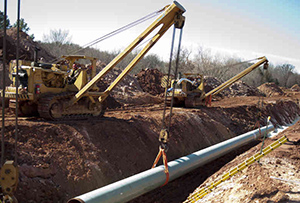“You cannot understand economics unless you understand energy. The industry is carrying the rest of the U.S. on its shoulders. Without the energy boom going on, there would be no economic recovery at all.” – Stephen Moore, Chief Economist for the Heritage Foundation, at the Shale Insight 2014 Conference
This month, the City of Pittsburgh hosted the Shale Insight Conference, bringing together key leaders who play a role in shaping public policy and the technical landscape of shale gas development. The relevant conversation was crucial, as the United States finds itself in the midst of an energy renaissance. By 2015, we are expected to pass Russia as the world’s largest natural gas producer and are currently producing more oil than we are importing. That is good news. Yet, with the influx of new resources, we must make sure we have the capability to safely transport goods to market. Unfortunately, our energy delivery system is in desperate need of updates and modernization in order to accommodate this energy boom.
This incredible energy renaissance will be for naught, if the transport of resources cannot be managed in a safe and reliable manner. While the United States’ energy delivery system, composed of millions of miles of pipeline and rail infrastructure is incredibly complex and sophisticated, it is constantly aging and deteriorating. Energy Secretary Ernest Moniz has acknowledged the need to update our energy delivery system, stating, “the infrastructure certainly just is not there, certainly in terms of pipelines…to handle the rise in production.”
Secretary Moniz wisely focuses on the need for pipeline infrastructure expansion. Pipelines have repeatedly proven to be the most reliable form of energy transportation. According to federal government statistics, pipelines are 16 times safer than rail and 189 times more secure than commercial motor vehicles when comparing freight tons shipped. Moreover, pipelines are also 451 times safer on a per-mile basis and 29,280 times more reliable than other modes of transportation. In 2013 alone, the U.S. transported 13.5 billion barrels of crude and refined products – of that amount, pipeline operators delivered those supplies safely 99.9 percent of the time
Without a doubt, we must modernize and update our pipeline infrastructure, starting with regulatory reforms. Given the rising estimate of U.S. production from the Energy Information Administration, we need a renewed focus by the Pipeline and Hazardous Materials Safety Administration (PHMSA) and the Department of Transportation (DOT) to finalize delayed regulations governing pipeline safety. A more efficient and streamlined regulation process would encourage additional investments and construction of new infrastructure – messages outlined in a policy paper we released earlier this year.
The fruit of such investment is apparent with many companies making significant ventures here at home. According to a recent Progressive Policy Institute (PPI) survey, the top 25 Investment Heroes invested around $152 billion in the U.S. in 2013 alone, with the top ten companies contributing nearly $100 billion of that total. Ten of those corporations were within the energy industry, investing a total of $57 billion in 2013.
These investments create new jobs and grow the economy. As the government drafts new rules and regulations, it should pursue policies, which continue to encourage these corporations – especially those making critical investments to develop and safely transport our energy resources. As a result, we will see more investments and the subsequent construction of additional energy infrastructure, ensuring the economic rewards of this energy renaissance and embracing our potential as the leader of the energy world.






